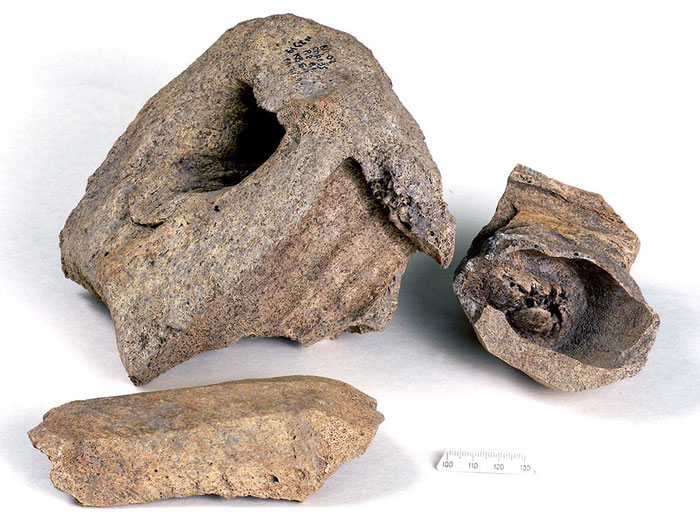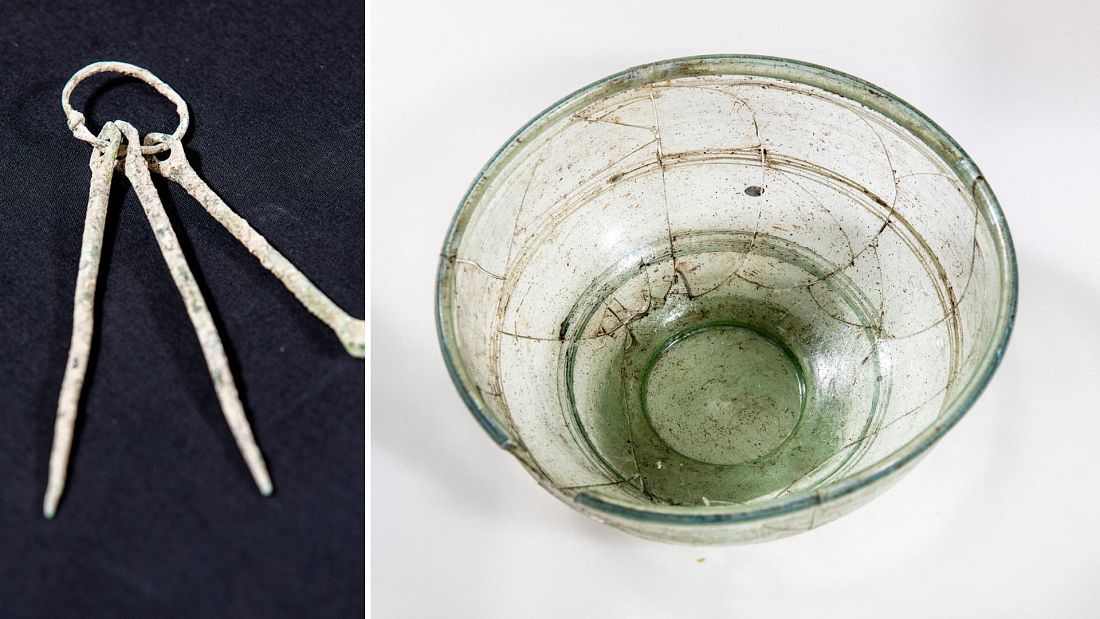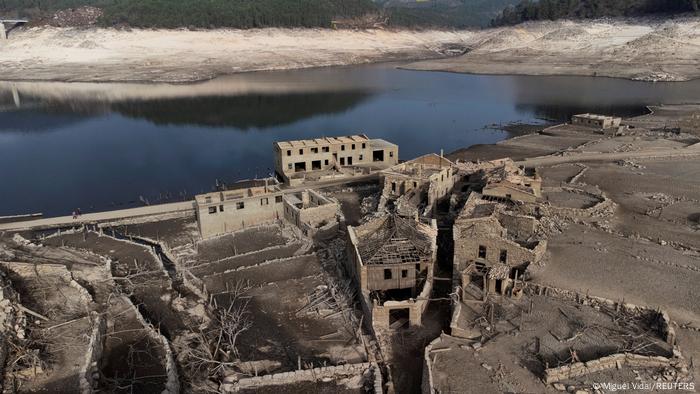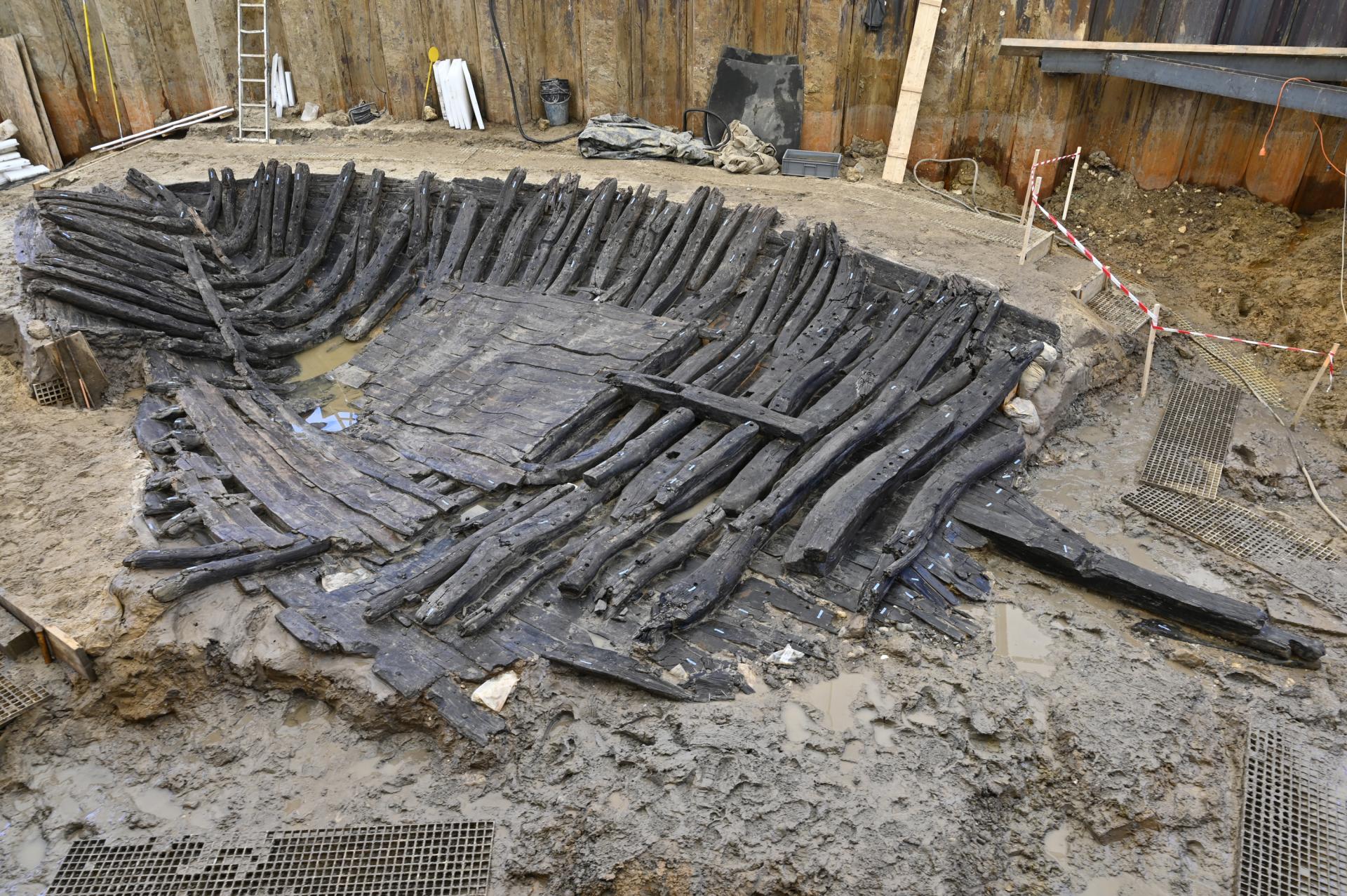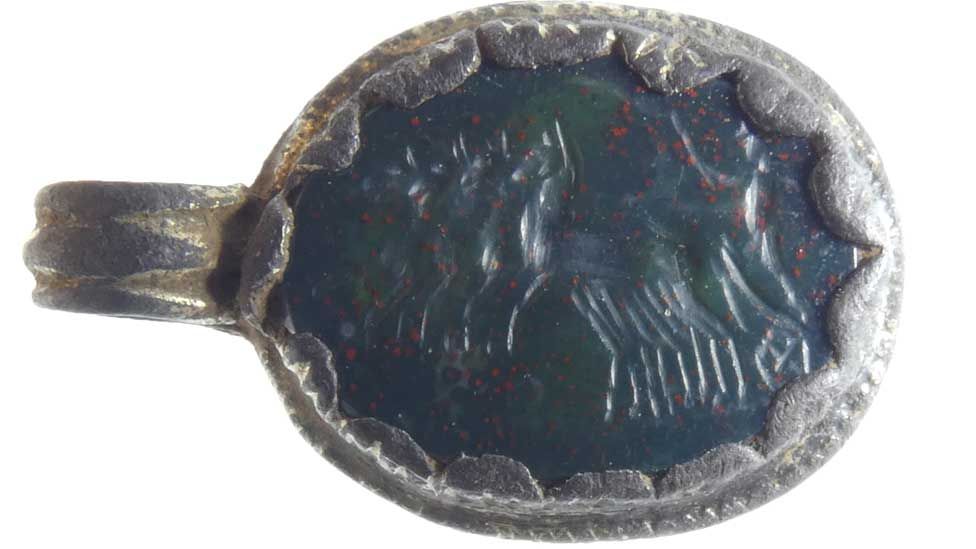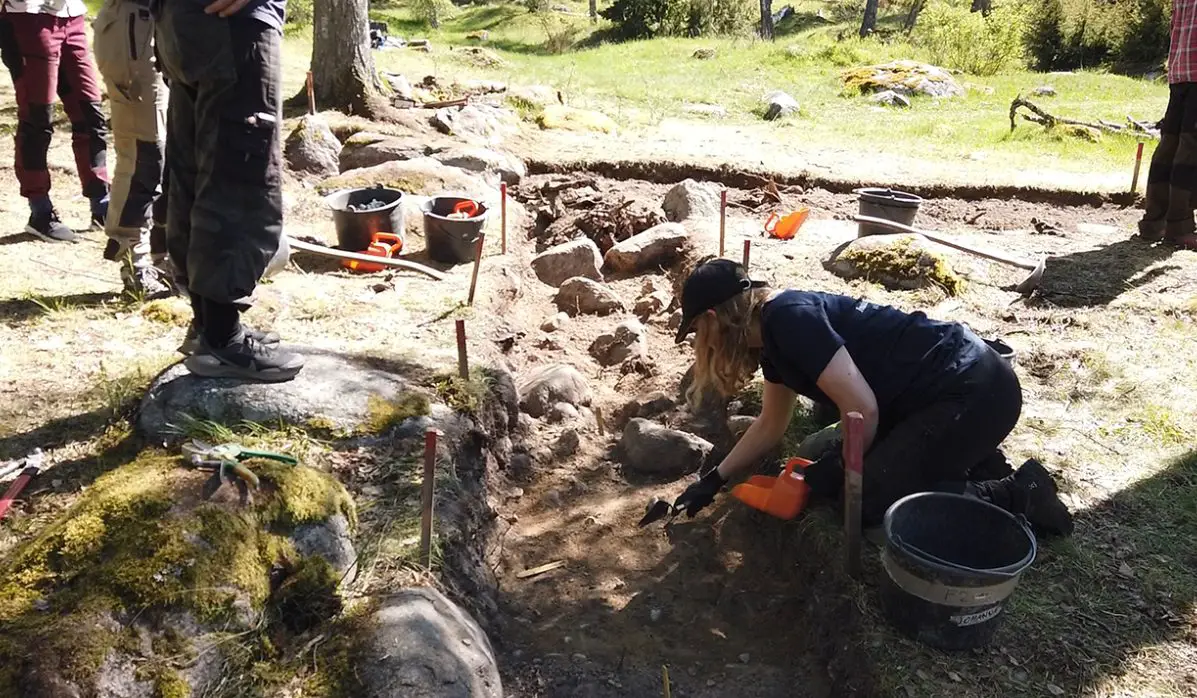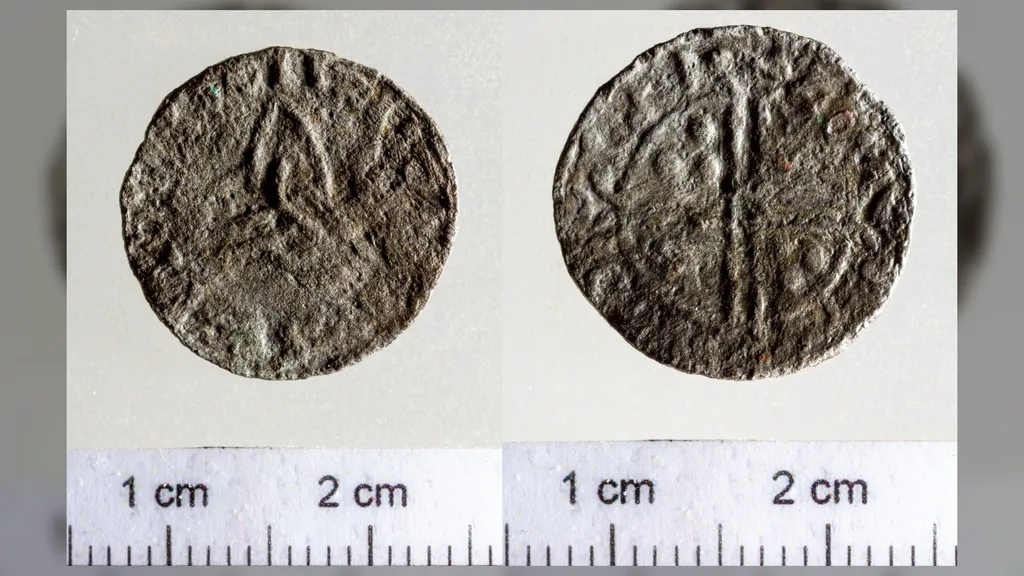Wednesday, June 22, 2022
New Thoughts on Eastern Europe's Medieval Source of Ivory
TRONDHEIM, NORWAY—According to a statement released by the Norwegian University of Science and Technology (NTNU), researchers led by James Barrett of the NTNU University Museum analyzed nine walrus snout bone fragments unearthed in 2007 during a construction project in Kyiv, an important trading city in the medieval period. In 2019, Barrett and his colleagues determined that Western Europe obtained most of its walrus products from Norse settlers in Greenland, although it was still thought that the ivory used in Eastern Europe came from the Barents Sea, which is located off the northern coasts of Norway and Russia. The researchers determined that five of the nine bone fragments had a genetic signature indicating they came from a genetic group of walruses only found in Greenland, while the chemical analysis of isotopes from the bones suggests that seven of the nine animals could have come from the region of Greenland.
Read the rest of this article...
The Worst Year Ever to Be Alive in History
The worst year to be alive? Eyjafjallajokull, the Icelandic volcano that threw transatlantic travel into a tailspin several years ago after it erupted, sending plumes of smoke over the North Atlantic, the UK and the continent. Another Icelandic volcano could have caused enormous disruption in the year 536 as well, according to new research.
Credit: Árni Friðriksson/Wikimedia Commons/ CC BY-SA 3.0
Credit: Árni Friðriksson/Wikimedia Commons/ CC BY-SA 3.0
The volcanic explosions of the year 536 caused modern-day researchers to state recently that that year was definitively “the worst year to be alive” in history.
A strange and unsettling fog, which even deprived the world of the sun’s warmth, plunged Europe, the Middle East, and parts of Asia into darkness both day and night for a year and a half starting in 536, causing untold misery across the globe.
The Byzantine historian Procopius made a record of the time and wrote that: “For the sun gave forth its light without brightness, like the moon, during the whole year.”
“One of the worst years to be alive”
Michael McCormick, a historian and archaeologist who chairs the Harvard University Initiative for the Science of the Human Past, says that in Europe, “It was the beginning of one of the worst periods, if not the worst year to be alive.”
Read the rest of this article...
Sunday, June 19, 2022
141 Anglo-Saxon graves discovered in England, alongside jewellery, weapons and earwax removers
Image shows a toiletry kit and a tubular rimmed glass bowl excavated from Wendover, Buckinghamshire - Copyright AP Photo
Archaeologists working on a site in Buckinghamshire in England have unearthed the well-preserved graves of a clique of wealthy Anglo-Saxons.
The site, which was excavated as part of the ongoing construction of the UK’s high-speed rail service HS2, contains 138 graves and is one of the largest ever uncovered.
Among the items found were a number of grooming tools including earwax removers, toothpicks, tweezers, combs and even a tube that could have contained makeup such as eyeliner; shedding light on how our ancestors practised self-care.
One of the burials, thought to be a male aged between 17-34, was found with a sharp iron object in his spine. Researchers believe he was stabbed from the front before the object embeded in his spine.
The insights offered into Anglo-Saxon life are unprecedented. The site is known to have been used by Romans during the Bronze Age and even in the Neolithic period, but the 5th and 6th centuries from which the objects are dated represents a gap in the historical record.
Read the rest of this article...
Severe droughts reveal sunken relics of the past
This old Spanish town re-emerged after a drought dried out the reservoir it was submerged in
As the climate crisis intensifies droughts from Iraq to Spain to the US, remnants of past towns and societies have reemerged from receding waters.
Droughts can be a normal part of the climate. But as temperatures rise in the wake of global heating, these dry spells are becoming more severe and longer in many regions. The trend can disrupt entire food systems, pushing millions into starvation and dehydration.
In an unusual twist, our current high-emitting lifestyle has also helped reveal how we used to live before the climate crisis became quite so urgent. That’s because droughts have uncovered remnants of past communities, some of them thousands of years old.
Read the rest of this article...
Archaeologists Examining 'Extremely Rare' 1,300-Year-Old Ship They Need to Water Every 30 Minutes
Archeologists in France have uncovered an "extremely rare" yet fragile shipwreck in France believed to be 1,300 years old.
The French National Institute for Preventive Archaeological Research (Inrap) revealed the 12-meter (40-foot) boat to the public Wednesday in Villenave-d'Ornon on the banks of the Garonne in southwest France, according to NBC News.
However, the wreck's beams of oak, chestnut and pine are delicate enough that air could destroy it, having not been in contact with oxygen or light since it sank, per the report.
Excavation leader Laurent Grimber told the outlet that workers "are watering" the partial remains of the wreck "every 30 minutes" as they aim to "limit the degradation of the wood."
Read the rest of this article...
Saxon pendant with Roman jewel found in Kingsey field
The engraved semi-precious gem is known as an intaglio and shows a figure with a raised whip on small chariot with four horses
A Roman jewel engraved with a chariot and four running horses was found set in a silver Anglo-Saxon pendant by a metal detectorist.
The small piece of jewellery was found in a field near Kingsey, Buckinghamshire, in May 2019.
Historian Edwin Wood said its "high-status" Sutton Hoo-era owner was someone who would have wanted "a direct link with Rome's power and authority".
It was declared treasure by Buckinghamshire Coroner's Court.
Read the rest of this article...
Archaeologists find Viking Age shipyard
Image Credit : Paul Parker – Stockholm University
Archaeologists excavating at Birka on the island of Björkö, Sweden, have discovered a Viking Age shipyard.
Birka, commonly referred to as Sweden’s first town, was established during the mid-8th century AD on the shores of Lake Mälaren. The town emerged as a major trading hub for merchants and tradesmen across Europe and beyond.
Excavations conducted by researchers from Stockholm University uncovered a stone-lined depression on the shore zone with a wooden boat slop at the bottom. The team also discovered large quantities of boat rivets, whetstones made from slate and woodworking tools, suggesting that the site was a Viking Age shipyard.
Sven Isaksson, Professor of Archaeological Science at Stockholm University said: “A site like this has never been found before, it is the first of its kind, but the finds convincingly show that it was a shipyard.
Through systematic survey, mapping and drone investigations, we can now show that Birka, in addition to the urban environment, also has a very rich maritime cultural landscape with remains of everything from jetties to boat launches and shipyards.”
Read the rest of this article...
Ivory found in Kyiv in 12th century originated from Greenland - study
Fragments of walrus tusks unearthed in 2007 were traced back to Greenland, indicating that trading routes in the Middle Ages were more advanced than previously thought.
Nine fragments of walrus ivory from as early as the 12th century that were found in a 2007 archaeological dig in Kyiv were found to have originated in Greenland, indicating that pan-European trading routes in the middle ages were more developed than previously thought, a new study found.
The study, which was published in the peer-reviewed journal "Proceedings of the Royal Society B: Biological Sciences" on April 6, used a number of advanced scientific methods in order to verify that the ivory fragments were indeed from Greenland, which at the time was the main source of walrus ivory.
Read the rest of this article...
Monday, June 13, 2022
Silver coin featuring famous Viking king unearthed in Hungary
The small silver coin was found near the Hungarian village of Várdomb. It dates to between 1046 and 1066 and is inscribed with the name of the Norwegian king.
(Image credit: Tamás Retkes)
(Image credit: Tamás Retkes)
A metal detectorist has discovered a small silver coin marked with the name of a famous Viking king. However, it was unearthed not in Scandinavia, but in southern Hungary, where it was lost almost 1,000 years ago.
The find has baffled archaeologists, who have struggled to explain how the coin might have ended up there — it's even possible that it arrived with the traveling court of a medieval Hungarian king.
The early Norwegian coin, denominated as a "penning," was not especially valuable at the time, even though it's made from silver, and was worth the equivalent of around $20 in today's money.
Read the rest of this article...
Sunday, June 05, 2022
Stakeholders! Archaeological volunteering at Sandwich Bay
A beautiful morning at Sandwich Bay, March 2022
© Alex Wilson
As an adventurous person I love finding new and exciting opportunities to get involved with voluntary work and exploring new things. So when Lara asked me to join her and the team of volunteers from CITiZAN and the Kent wildlife trust. I didn’t hesitate to say yes! Because who doesn’t love a day at the beach.
We arrived at Cliffsend at 7am. Which was followed by a safety briefing about mostly avoiding falling over objects or falling down holes. Which I found quite amusing to think of being thrown a rope in to save me from drowning in thick wet sinking sand*. We walked about 500m from the shore, I was given the precious job of holding the survey device to record points along, where remnants of the anti-landing poles from the Second World War and fish traps possibly from the 18th to 20th century should have been** but they weren’t there – either covered with sand or maybe gone completely. I felt great responsibility and fear of damaging this expensive piece of equipment. Worth thousands of pounds! More money than I have to pay back! Luckily all was okay and nothing got damaged.
Read the rest of this article...
Subscribe to:
Posts (Atom)
